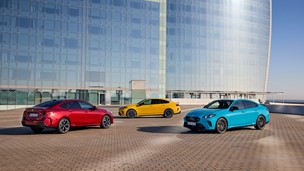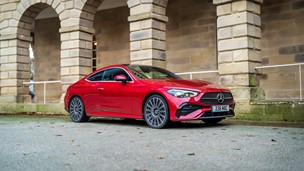One of Citroen's most popular cars in the first decade of the 21st century was the Xsara Picasso, whose combination of practicality and low cost appealed to so many people that the car continued in production several years after being officially replaced.
Its successor, two generations on, is the C4 Picasso launched in 2013. This is the first car to have been designed on the EMP2 platform developed by Citroen and sister company Peugeot, and despite being larger and roomier than the Xsara it's also lighter.
While its striking looks may take some getting used to, there's no doubt that the C4 Picasso has plenty of space for passengers and luggage. If you need still more, there's a seven-seat Grand version.
Two petrol and three diesel engines are available, over a range of power outputs that will suit the tastes of most potential buyers. All versions have manual transmission, but ETG6 models have electronic control of the gearchanging and clutch operations, so there's no clutch pedal.
Performance
The fastest C4 Picasso is the turbo petrol THP155, which has a 0-62mph time of 9.0 seconds and a top speed of 130mph. A hot hatch engine in a fairly large MPV seems an odd combination, though, and you can go nearly as quickly in a far more relaxed manner if you choose the BlueHDi 150 diesel instead.
It's more expensive, but it matches the rest of the car better, you won't use nearly as much fuel and we'd suggest that it will be more appealing to secondhand buyers at resale time.
The 1.6-litre e-HDi 115 diesel's performance is perfectly adequate for this kind of car. Top speed is 117mph and the 0-62mph time is 11.8 seconds with the manual gearbox and 12.3 seconds with the ETG6. These are not dramatic figures, but the e-HDi doesn't feel underpowered in real life, and it would definitely be our choice of engine.
The less powerful HDi 90 diesel and the VTi 120 petrol engine can feel out of breath in the C4 Picasso but would be adequate if most of your driving takes place in urban areas.
Ride and Handling
In an almost stereotypically French way, the C4 Picasso is very softly sprung
In an almost stereotypically French way, the C4 Picasso is very softly sprung. The ride is therefore smooth in most circumstances, but the front-end damping is insufficient and allows the nose of the car to wallow too much. Both handling and comfort could be improved by changing its settings for British roads. On the plus side, engine and wind noise are both very well suppressed. The ETG6 transmission, like every automated single-clutch manual gearbox there has ever been, moves from one ratio to the next very slowly. The harder you're trying to accelerate, the more laborious it feels. Changes are smooth only if you back off the throttle just before they happen, which is easy enough when you're using the steering wheel-mounted paddles to determine when this is, but requires very accurate guesswork if you're in automatic mode. In fact, ETG6 is one of the better gearboxes of its type, but the problems mentioned above are inherent to all of them. We'd definitely avoid it and have the manual transmission instead.
Interior and Equipment
Citroen bought the rights to use the Picasso name from the artist's estate. His granddaughter Marina voiced strong objections but has not been able to overturn the decision.
The rear seats are narrow, but they can all be reclined and moved forwards or backwards independently from each other. Depending on how you arrange them, luggage capacity varies from 537 to 630 litres up to parcel shelf level, and if you fold them down and pack the car up to the roof there's a very impressive 1,851 litres available. As the result of a slightly unfortunate design oversight, folding those seats can't be done from the rear of the car. There are no instruments directly in front of the driver. Instead, there's a 7-inch touchscreen in the middle of the dashboard and a 12-inch digital display mounted further up. In each case the graphics are excellent, and there's a choice of visual themes. You can also upload a background image of your own should you choose to do so. The front seats in higher-specification models are very comfortable, and visibility is good in most directions.
Cost
Several diesels have emissions of 110g/km or less, so annual tax is just £20
If you can bear the leisurely performance and slow gearchanges, the e-HDi 90 with ETG6 has a CO2 rating of 98g/km - a remarkable figure for a roomy MPV which means you don't have to pay any Vehicle Excise Duty. Several of the other diesels have emissions of 110g/km or less, so annual tax is just £20. Official combined fuel economy in some case exceeds 70mpg, but in our experience this is extremely difficult even to come close to according to the trip computer, which we've in turn found to be far more optimistic than our own measurements. By an odd quirk of the EU test, the VTi 120 petrol engine is in theory less economical than the much more powerful THP 155. In the real world we'd bet the farm on the opposite being the case.
Our Verdict
The current C4 Picasso is less quirky but in some ways more clever than the last one, and technologically in a different world from the Xsara that introduced Citroen to this sector of the market. It could be better to drive, but despite not being overly large on the outside it can carry a great deal of stuff, and that's likely to be far more important to the people who might buy it. We'll have an e-HDi 115 with the manual gearbox, please.




